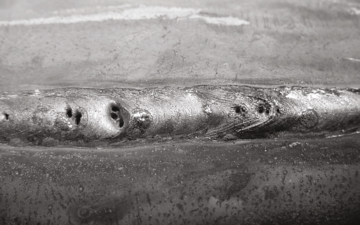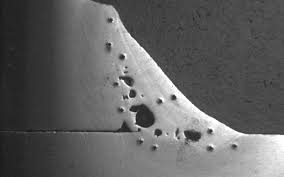What is Porosity in Welding: Comprehending Its Causes and Enhancing Your Skills
What is Porosity in Welding: Comprehending Its Causes and Enhancing Your Skills
Blog Article
The Science Behind Porosity: A Comprehensive Guide for Welders and Fabricators
Comprehending the elaborate mechanisms behind porosity in welding is essential for welders and fabricators making every effort for impressive workmanship. From the structure of the base materials to the intricacies of the welding procedure itself, a plethora of variables conspire to either aggravate or alleviate the visibility of porosity.
Recognizing Porosity in Welding
FIRST SENTENCE:
Exam of porosity in welding exposes crucial understandings into the honesty and top quality of the weld joint. Porosity, defined by the presence of cavities or spaces within the weld metal, is an usual worry in welding processes. These spaces, if not effectively attended to, can compromise the structural honesty and mechanical residential or commercial properties of the weld, leading to prospective failures in the completed item.

To detect and evaluate porosity, non-destructive testing approaches such as ultrasonic screening or X-ray evaluation are frequently utilized. These methods enable for the recognition of inner problems without jeopardizing the honesty of the weld. By analyzing the dimension, shape, and distribution of porosity within a weld, welders can make enlightened decisions to improve their welding procedures and achieve sounder weld joints.

Factors Affecting Porosity Development
The event of porosity in welding is influenced by a myriad of variables, ranging from gas securing effectiveness to the details of welding parameter setups. Welding parameters, including voltage, existing, take a trip speed, and electrode type, additionally impact porosity development. The welding technique utilized, such as gas steel arc welding (GMAW) or shielded metal arc welding (SMAW), can affect porosity formation due to variations in warmth distribution and gas protection - What is Porosity.
Results of Porosity on Weld Quality
Porosity development significantly jeopardizes the architectural integrity and mechanical residential or commercial properties of bonded joints. When porosity is existing in a weld, it creates spaces or dental caries within the material, minimizing the total stamina of the joint. These spaces act as tension focus points, making the weld much more susceptible to splitting and failing under load. The existence of porosity also compromises the weld's resistance to rust, as the entraped air or gases within deep spaces can respond with the surrounding setting, leading to deterioration gradually. In addition, porosity can hinder the weld's capacity to hold up against pressure or impact, further jeopardizing the general high quality and integrity of the welded structure. In important these details applications such as aerospace, automotive, or structural constructions, where security and durability are vital, the destructive results of porosity on weld quality can have serious consequences, highlighting the importance of decreasing porosity through appropriate welding methods and procedures.
Techniques to Decrease Porosity
Furthermore, making use of the suitable welding specifications, such as the proper voltage, present, and take a trip speed, is important in preventing porosity. Preserving a consistent arc size and angle throughout welding likewise assists lower the possibility of porosity.

In addition, selecting the ideal securing gas and maintaining appropriate gas circulation rates are crucial in lessening porosity. Utilizing the appropriate welding strategy, such as back-stepping or using a weaving movement, can additionally help disperse heat uniformly and lower the chances of porosity formation. Making certain correct air flow in the welding environment to eliminate any type of possible resources of contamination is crucial for achieving porosity-free welds. By applying these techniques, welders can successfully minimize porosity and generate top quality welded joints.

Advanced Solutions for Porosity Control
Implementing cutting-edge modern technologies and ingenious techniques plays a pivotal duty in accomplishing exceptional control over porosity in welding procedures. Furthermore, employing advanced welding techniques such as pulsed MIG welding or changed ambience welding can likewise aid mitigate porosity problems.
An additional sophisticated solution includes the usage of advanced welding devices. Utilizing equipment with integrated functions like waveform control and sophisticated my explanation power sources her latest blog can enhance weld quality and minimize porosity risks. The execution of automated welding systems with specific control over specifications can significantly lessen porosity issues.
Moreover, incorporating sophisticated monitoring and assessment modern technologies such as real-time X-ray imaging or automated ultrasonic screening can aid in finding porosity early in the welding procedure, allowing for instant restorative actions. Generally, integrating these innovative remedies can greatly improve porosity control and boost the total top quality of bonded components.
Conclusion
In conclusion, recognizing the scientific research behind porosity in welding is necessary for welders and producers to create top notch welds. By determining the variables influencing porosity formation and applying strategies to reduce it, welders can boost the overall weld quality. Advanced services for porosity control can better boost the welding process and guarantee a strong and trusted weld. It is very important for welders to constantly inform themselves on porosity and apply finest techniques to accomplish optimal results.
Report this page